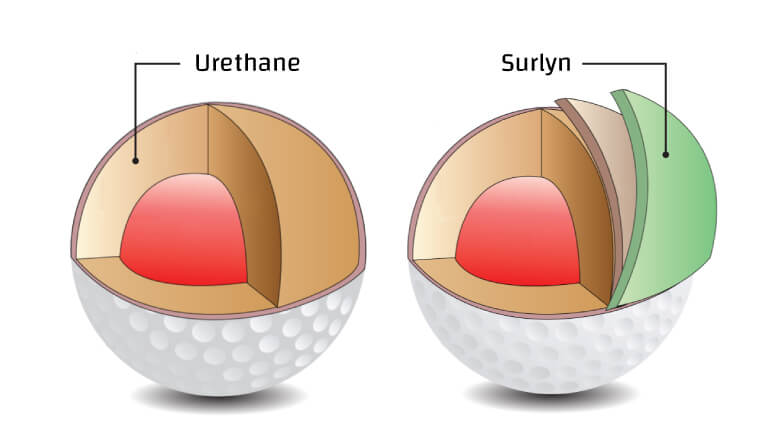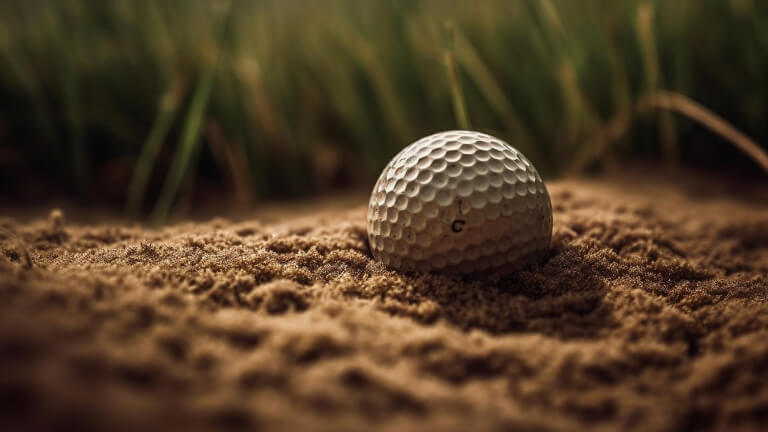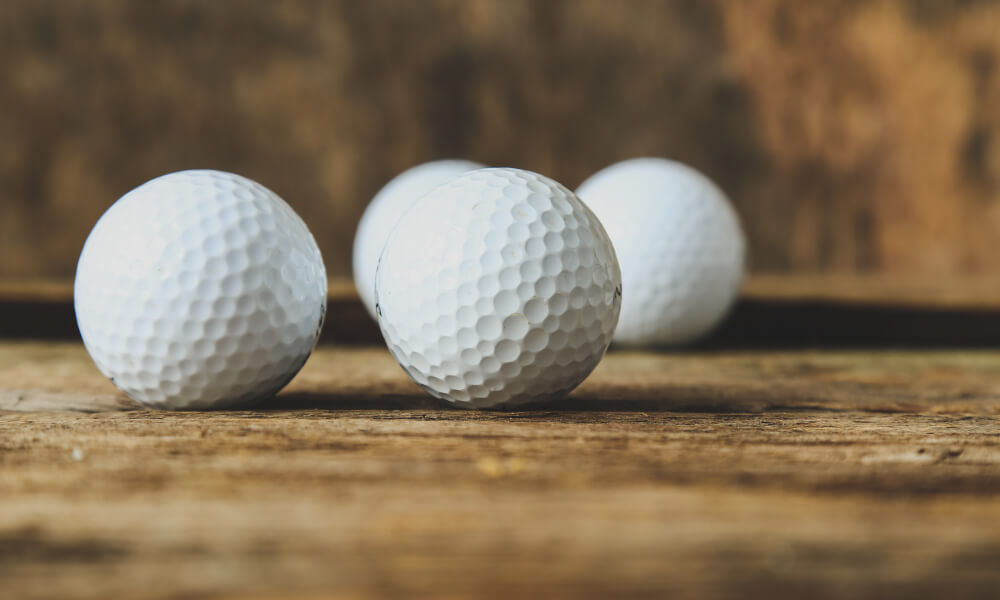Golf is a game of precision and skill where every piece of equipment counts. One such vital component is the golf ball. Despite its small size, a golf ball can significantly impact your game. But a question that often arises is, how long does a golf ball last?
Even the best golf balls can deteriorate with age due to exposure to extreme temperatures, moisture, and frequent usage. Golfers need to store their balls in optimal conditions and replace them periodically to ensure optimal performance on the course.
This article explores this aspect in depth, discussing the factors contributing to a golf ball’s lifespan and when you should consider changing it.
Table of Content
Understanding Golf Ball Durability
Over time, the performance and durability of a golf ball can be affected by various factors such as storage conditions, usage, and the materials used in its construction.
One of the main factors that can impact the deterioration of a golf ball is exposure to extreme temperatures. The golf ball’s cover can become fragile and break easily in high temperatures. In contrast, low temperatures can lead to the loss of elasticity in the core, resulting in reduced distance and performance.
Another factor contributing to the deterioration of golf balls is prolonged exposure to moisture. When golf balls are stored in damp conditions, the cover can absorb moisture, losing distance and accuracy. Additionally, the presence of moisture can also promote mold or mildew growth on the ball’s surface, further compromising its performance.

Furthermore, the frequency of usage can also impact the lifespan of a golf ball. As golf balls are struck with high-impact forces, they can experience wear and tear over time. Repeated strikes with clubs can cause the dimples on the ball’s surface to wear down, resulting in reduced lift and less control.
To illustrate the deteriorating effects of age on golf balls, consider the following examples:
Example 1: A golfer who stores their golf balls in a garage where temperatures can exceed 100°F (37.8°C) during the summer months may find that the covers of their golf balls start to crack or peel after a few months of storage. This can lead to a loss of distance and control when playing.
Example 2: A golfer who frequently plays in wet and rainy conditions and fails to dry their golf balls after each round may notice that the balls become waterlogged and lose their bounce. This can result in reduced distance and accuracy off the tee.
Understanding Golf Ball Basics
Before diving into the lifespan of a golf ball, let’s first understand its basic structure. A standard golf ball comprises two main parts: the cover and the core. Each element plays a crucial role in the ball’s performance and durability.
The Cover of a Golf Ball

The golf ball’s cover is the outermost layer directly contacting the club at impact. It is typically made from two different materials: a more rigid ionomer material or a softer urethane.
Ionomer covers, used in distance-oriented golf balls, can withstand the impact of mis-hits and rough terrains. Examples include the Bridgestone e6 and Callaway SuperSoft.
On the other hand, urethane covers are softer and thinner, used in premium golf balls for better control and feel. The Titleist Pro V1 and Srixon Z-Star are examples of urethane-covered balls.
The Core of a Golf Ball
With the golf ball’s core playing such an indispensable role, it’s vital to understand how it affects your game. These polymer-based cores are designed to withstand intense impacts, ensuring the ball keeps its shape and trajectory even after a forceful hit.
But it’s not just about durability – the core also influences the spin and speed of the ball, contributing significantly to its overall performance. By mindfully choosing a golf ball with a core that suits your style and skill level, you’ll be paving the way for a more successful game. Remember, knowledge is power – and understanding the intricacies of your equipment can be a game-changer on the green.
Determining When to Switch Your Golf Ball
When should you consider changing your golf ball? The answer depends on several factors.
Firstly, physical damage, such as visible scuffs or cuts on the cover, can affect the golf ball’s performance. A ball without visible damage can easily last up to seven 18-hole rounds.
However, if a golf ball feels rough to the touch or you’ve lost significant distance, it’s time to replace it. Also, remember that the psychological aspect plays a role. If you’ve had a poor round, switching to a new ball might give you the confidence boost you need to get back on track.
Storage Duration of Golf Balls
Contrary to popular belief, golf balls must not be stored in freezers to maintain their properties. Cold temperatures can cause you to lose distance, like playing golf in cold weather.
The ideal storage conditions for golf balls are average room temperatures. In such conditions, golf balls can last for years without losing performance. So, feel free to stock up on your favorite ones; they will be around for a while!
Performance Drop-off in Golf Balls

Now, let’s address the concern of performance drop-offs in golf balls. The simple answer is that as long as the golf ball hasn’t sustained any significant damage, it can last up to seven 18-hole rounds without any loss in performance.
However, when a golf ball incurs a scuff larger than the size of a dime, its performance may decline. Furthermore, advancements in the durability of the elastomer cover mean frequently rotating balls are no longer necessary, as was the case with the older wound golf balls.
The Impact of Damage and Wear
Damage and wear can significantly affect a golf ball’s performance. For instance, a golf ball catching the cart path or ricocheting off a tree and incurring a large scuff can result in a performance loss.
Additionally, a golf ball’s longevity depends on how it’s treated during play. Pro golfers often change balls a few times per round, while recreational golfers might play multiple rounds with the same ball.
The Psychological Factor
The psychological aspect of golf must be considered. Often, golfers replace golf balls more out of habit or superstition than necessity. For instance, some golfers may switch to a new ball after a wrong hole, believing it will improve their game.
Storage Conditions for Longevity
Proper storage can significantly enhance the lifespan of golf balls. They should ideally be stored at room temperature and away from extreme weather conditions, particularly excessive heat or cold. Furthermore, it’s advisable to store golf balls indoors and in their original packaging to protect them from UV rays, which can affect the outer layer.
Frequently Asked Questions
Regarding golf balls and their durability, several questions often come up. Here are some of the most common ones, along with their answers:
Can golf balls be stored in the cold?
Yes, golf balls can be stored in the cold. Storing golf balls at cooler temperatures has some benefits. When golf balls are exposed to colder temperatures, the materials they are made of, such as the rubber and plastic components, become more rigid. This increased rigidity can lead to improved energy transfer when the golf ball is struck, resulting in longer distances and better overall performance.
Also, storing golf balls in colder temperatures can help preserve their condition. Extreme heat can cause golf balls to lose shape and compressibility, negatively impacting their performance. By storing golf balls in cooler temperatures, you can help maintain their original characteristics and extend their lifespan.
It’s worth noting that extreme cold temperatures can also negatively affect golf balls. When exposed to freezing temperatures, the materials in the golf ball can become more brittle, leading to cracks or other damage. To avoid this, it’s important not to expose golf balls to freezing temperatures for extended periods.
When can you switch golf balls?
You can switch golf balls at any time during a round, provided you adhere to the rules of golf. The general rule is that you can change your golf ball between holes, not during the play of a hole. If your ball is damaged or lost during play, you can replace it without penalty.
How often should you replace your golf balls?
Golf balls don’t have a specific time frame for replacement. Instead, you should replace them when they show signs of wear and tear or damage. This could be after a few rounds, depending on how often you play and the condition of the golf balls. Regularly inspect your balls for scuffs, cracks, or loss of elasticity, and replace them accordingly to maintain optimal performance.
Conclusion
The lifespan of a golf ball depends on various factors, including its construction, usage, and storage conditions. By understanding these factors, you can ensure that your golf balls last longer and perform at their best, ultimately helping you improve your game.

